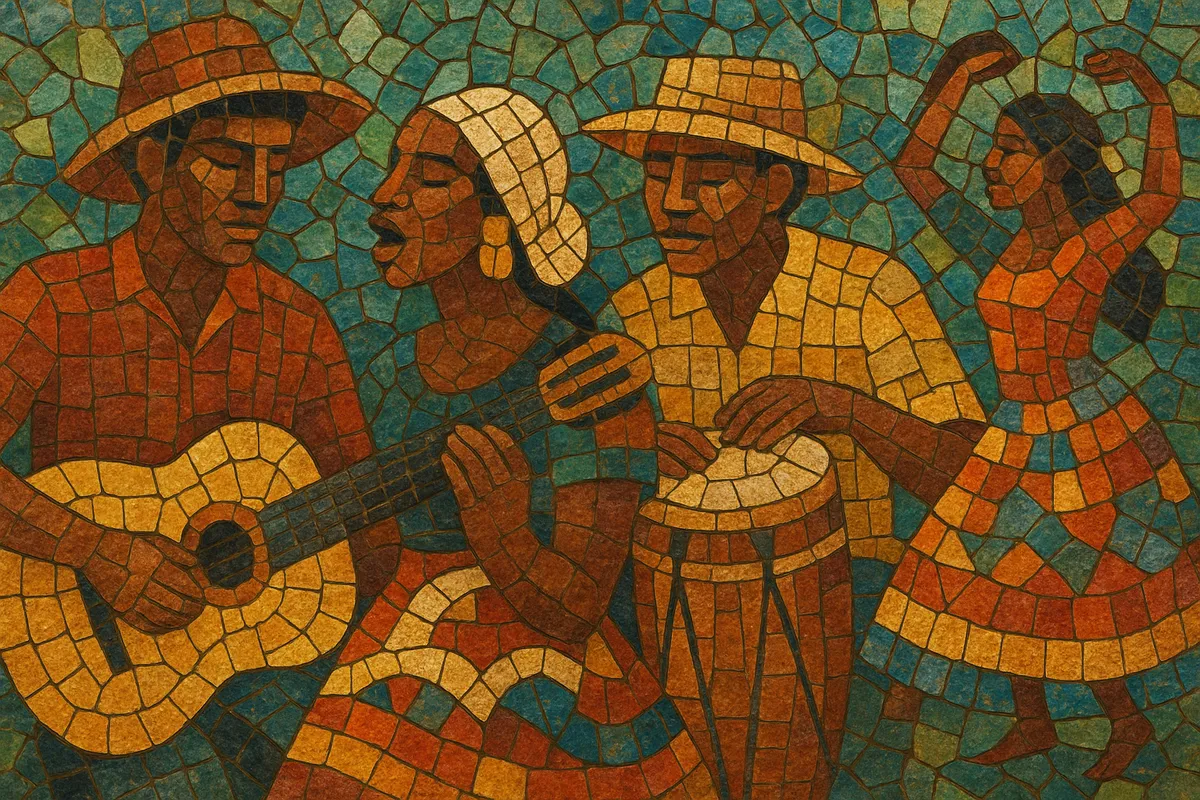Brazilian folk music is an umbrella term for the country’s regional and traditional musics that grew from the encounter of Indigenous, African (mainly West and Central African), and Iberian (especially Portuguese) cultures.
It encompasses rural song, dance, and ritual genres such as baião and forró in the Northeast, viola-caipira traditions in the Southeast and Center-West, Afro-Brazilian drumming and chant in maracatu and jongo, circle-dance genres like ciranda and coco, and many others associated with religious festivals, work songs, and oral poetry.
Marked by call-and-response vocals, propulsive percussion, syncopated grooves, and narrative lyrics, Brazilian folk music remains a living tradition that informs Brazilian popular music while preserving local identity and heritage.
Brazilian folk music crystallized during the 18th–19th centuries as Indigenous musics, Portuguese song and dance forms, and African rhythmic practices intermingled across colonial Brazil. Early urban salon-song genres like modinha and the Afro-origin lundu became touchstones, while in rural areas the viola caipira (ten‑string guitar) anchored song traditions tied to migration, ranching, and devotionals.
From the 1930s–1950s, radio and records projected folk styles nationwide. Luiz Gonzaga popularized baião and forró, while Jackson do Pandeiro highlighted coco and syncopated Northeastern grooves. Urban scenes absorbed folk idioms, feeding choro, samba, MPB, and later tropicália and mangue beat.
Folklorists (e.g., Mário de Andrade) and cultural movements cataloged and revitalized regional forms. Since the late 20th century, master practitioners (mestres) have led community groups, festivals, and educational projects, while contemporary artists and bands rework traditional grooves with modern instrumentation, keeping transmission active in both local rituals and national stages.


